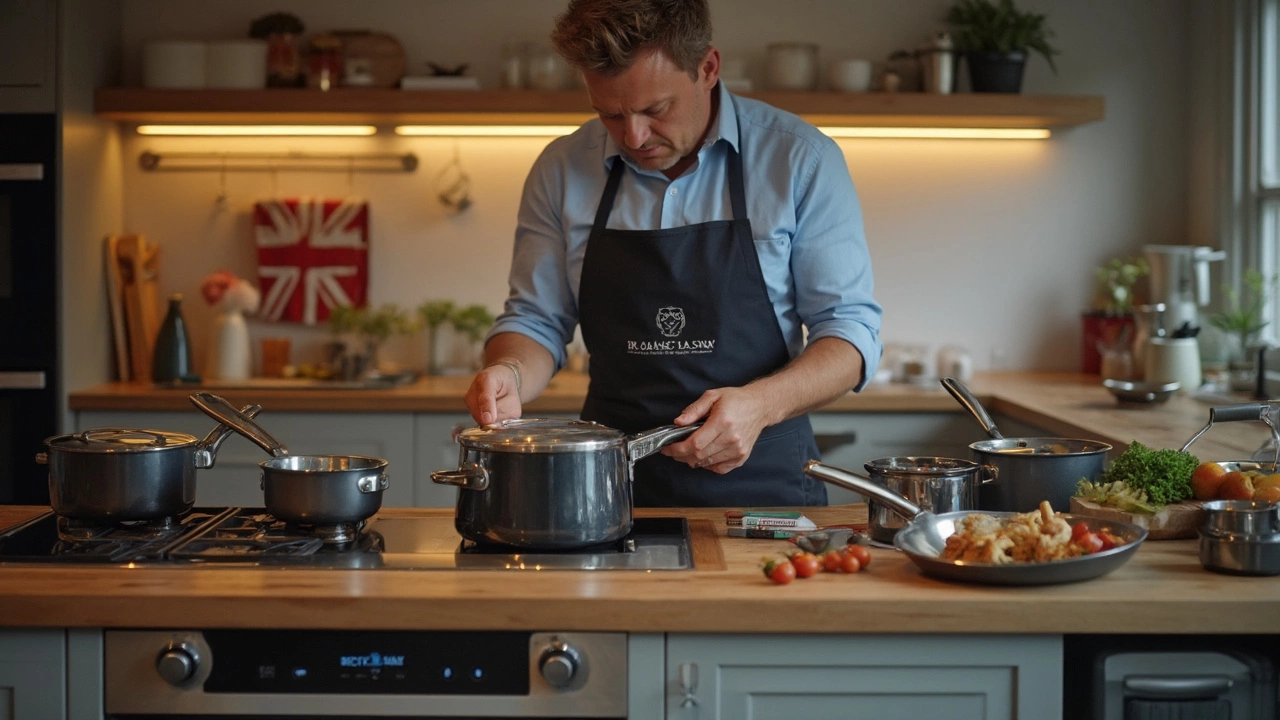Nonstick Pans: Your Quick Guide to Picking, Using, and Caring
If you love dishes that slide off the pan without a struggle, you’re in the right place. Nonstick pans make breakfast, stir‑fries, and desserts way less messy. Below you’ll find straight‑forward advice on what to look for, how to cook safely, and how to keep the surface working for years.
How to Choose the Right Nonstick Pan
First, check the coating type. Modern pans use ceramic, hard‑anion, or traditional PTFE. Ceramic feels gritty at first but is free of PFOA, while hard‑anion offers higher heat tolerance. Decide based on how hot you plan to cook – stir‑fry at 400°F needs a tougher coating.
Next, size matters. A 10‑inch pan fits most one‑to‑two‑serving meals, while a 12‑inch works for families. Look at the base: a thick aluminum or stainless core spreads heat evenly and prevents hot spots that can damage the coating.
Don’t forget the handle. It should stay cool with a secure grip; silicone‑wrapped or riveted metal handles are best. If you love oven‑finishing, make sure the pan’s handle is oven‑safe up to at least 350°F.
Caring for Your Nonstick Pans
When you first use a new pan, wash it with warm, soapy water and dry it completely. This removes any factory residue that can affect performance.
Cooking temperature is the biggest enemy of nonstick life. Keep the burner on low to medium; a sizzling sound means you’re too hot. Use a little oil or butter, but don’t pour a full ladle – the coating already reduces sticking.
Choose the right tools. Wooden, silicone, or plastic spatulas protect the surface. Metal utensils can scratch or chip, especially on softer ceramic coatings.
Cleaning is simple: let the pan cool, then wash by hand with a soft sponge and mild dish soap. Avoid abrasive pads or harsh detergents. If food sticks after a wash, soak a bit of baking soda and water, then scrub gently.
Storing the pan correctly extends its life. Place a paper towel or cloth between stacked pans to prevent scratches. If you have a lid, store it separately to avoid pressure on the coating.
Finally, know when to retire the pan. If the surface peels, flakes, or shows deep scratches, it’s time for a replacement. Continuing to cook with a damaged coating can affect food flavor and safety.
With these tips, your nonstick pans will stay slick, safe, and ready for any quick meal. Enjoy the hassle‑free cooking experience without worrying about burnt food or endless scrubbing.
Curious about Gordon Ramsay cookware? This article breaks down what sets it apart, how it performs in everyday kitchens, and what you need to watch out for when shopping. Discover product lines, real-life benefits, and why home cooks and pros both pay attention to Ramsay’s pans, pots, and tools. You'll pick up tips for choosing the right set and learn which features actually matter. Find out if this popular cookware lives up to its famous name.
May, 10 2025
